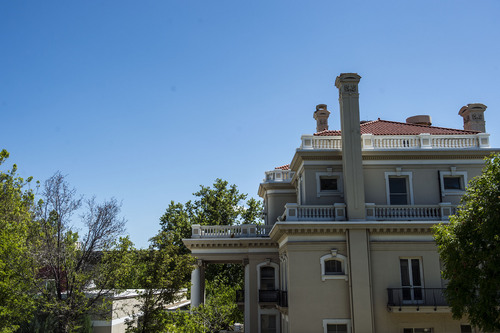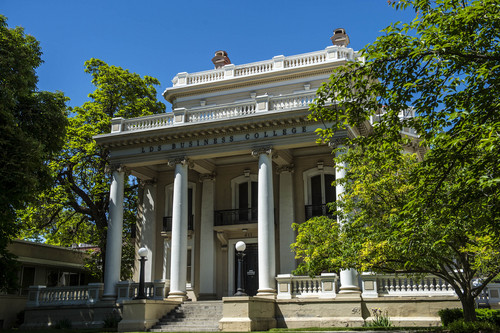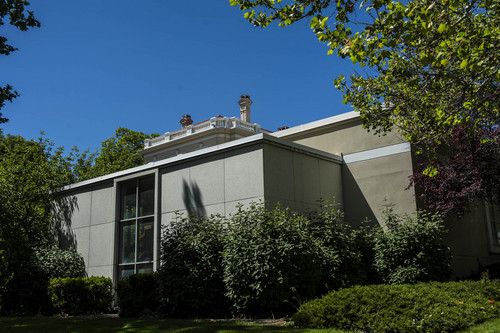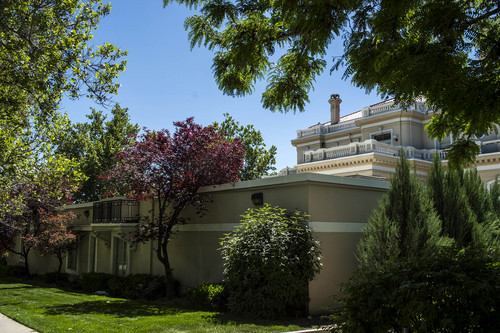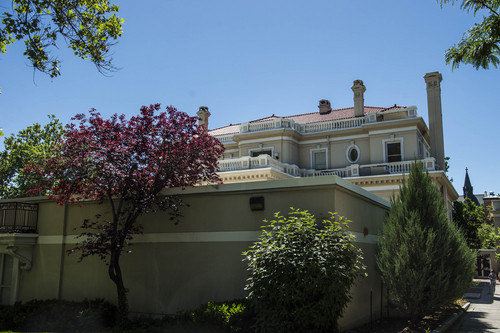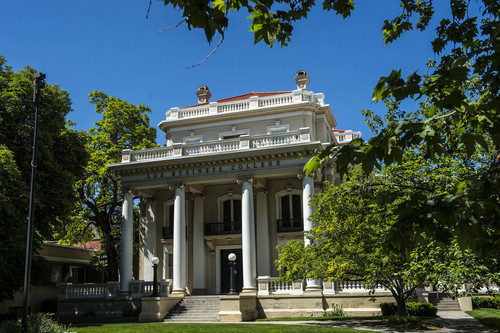This is an archived article that was published on sltrib.com in 2014, and information in the article may be outdated. It is provided only for personal research purposes and may not be reprinted.
Originally built for a Salt Lake City mayor, redesigned for a mining magnate by one of the state's foremost architects and used by two religions, Wall Mansion has already lived many lives.
The neoclassic South Temple building has been vacant for the past eight years, but now the University of Utah is planning a $7 million renovation to bring the historic building back to its former glory to serve as a stately event center and headquarters for a new public policy research institute.
"We would view this building as the University of Utah embassy to the state and to the community," said Jason Perry, U. vice president of government relations. "It's going to be a place [that hosts] some of the most important events for the University of Utah and hopefully some of the most important events for the state."
The U. board of trustees accepted the donation of the mansion Tuesday from The Church of Jesus Christ of Latter-day Saints, which used the building for its LDS Business College until 2006. Work on the building, paid for with donations, is slated to begin after the project is approved by two other agencies next month and finish in fall 2015.
Architect Allen Roberts plans to demolish the east wing of the building, which was built by the college for classroom space in the 1970s. The change will open up the grounds, also set for a face-lift with new paving and landscaping.
The exterior of the structure at 411 E. South Temple will be touched up, and inside the electrical and heating-cooling systems will also get upgrades. Workers will preserve the house's interior details, including polished bronze, built-in bookcases, delicate woodwork, stained glass and marble, based on historic photographs.
"Part of our goal is to make the fancy rooms look like they did in 1910 as much as we can," said Roberts. The offices, meanwhile, "will be very high-tech and very historic at the same time."
Those offices will house the newly created Utah Policy Institute, a combination of the Center for Public Policy Administration and the Bureau of Economic and Business Research. The new space will give the researchers from two colleges the chance to collaborate and take on bigger projects, Perry said.
They'll be "looking into the important issues facing the state of Utah ... health care, transportation, the economy," Perry said. "Having them in this landmark facility shows just how important the University of Utah itself views these programs."
Wall Mansion is important historically and architecturally, said Roberts, as an example of work by Utah Capitol designer Richard K. A. Kletting during the period when mining millionaires were building opulent homes around the state.
It was originally an Italianate Victorian-style home built in the 1880s and owned by one-time Salt Lake City Mayor James Sharp, who was also a chancellor at the U.
Mining magnate Enos Wall, a founder of what's now Kennecott Utah Copper, bought the house in 1904. He hired Kletting, who covered the brick building with concrete and steel, making it into a fireproof, columned neoclassical revival structure.
It was also enlarged to about 35,000 square feet, with a third-floor ballroom, still-functional Otis electric elevator, built-in vacuum system, steam heat and fireplaces in all six bedrooms.
A tunnel connected the home to a heating plant, caretaker's quarters, carriage house and greenhouse, according to the Utah State Historical Society. The new U. renovation will also remake the two-story carriage house and restore the U-shaped entrance.
After Wall's death in 1920, the building became home to the Salt Lake Jewish Center and the offices of the Pacific National Life Assurance Co. The LDS Church bought the building in the early 1960s, adding extra space for LDS Business College classrooms, a library and bookstore. The school moved to the Triad Center on North Temple in 2006, and the building has been empty ever since.
"When it was abandoned, I worried about it because of vandalism, transients and homeless people were sleeping around the back of it around the niches," said Roberts. "It's nice we found a new use for the estate. ... They want it to be a high-end project similar to the governor's mansion."
Twitter: @lwhitehurst


